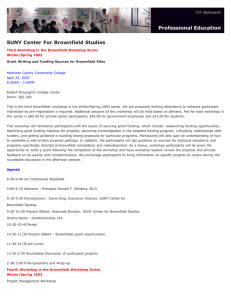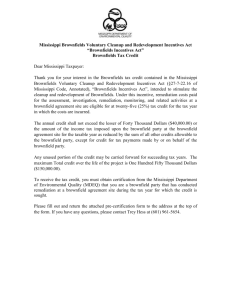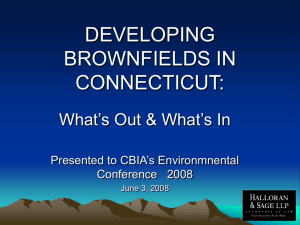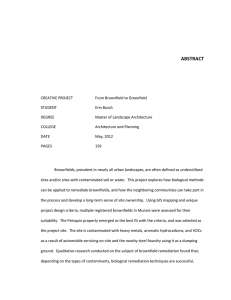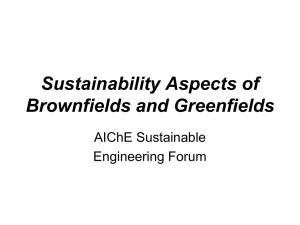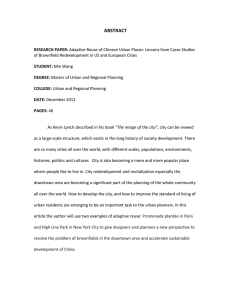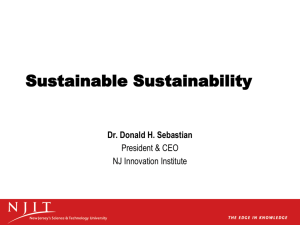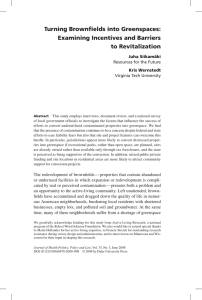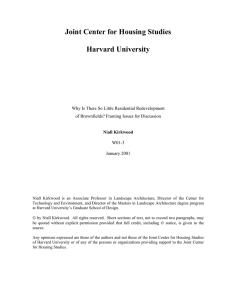Turning Brownfields Into Greenfields: Combating Food Insecurity through Urban Agriculture
advertisement
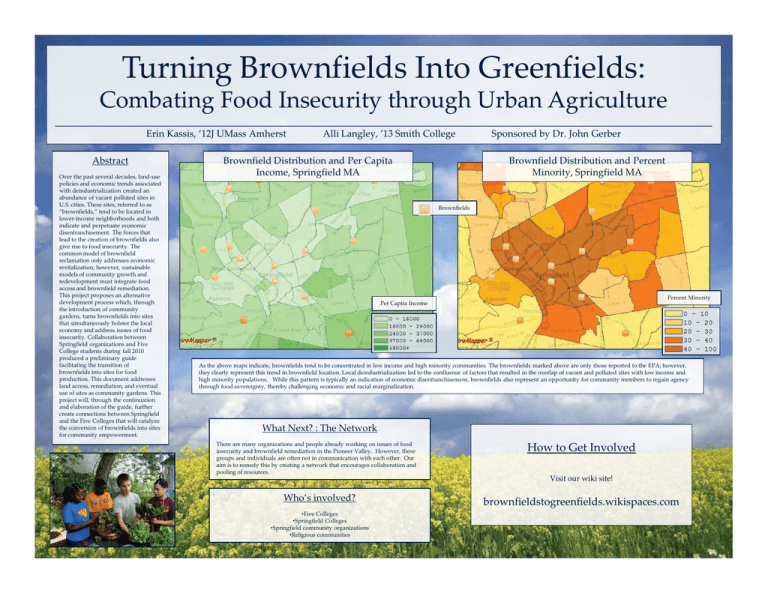
Turning Brownfields Into Greenfields: Combating Food Insecurity through Urban Agriculture _________________________________________________________________________________________________________________ Erin Kassis, ’12J UMass Amherst Abstract Over the past several decades, land-use policies and economic trends associated with deindustrialization created an abundance of vacant polluted sites in U.S. cities. These sites, referred to as “brownfields,” tend to be located in lower-income neighborhoods and both indicate and perpetuate economic disenfranchisement. The forces that lead to the creation of brownfields also give rise to food insecurity. The common model of brownfield reclamation only addresses economic revitalization; however, sustainable models of community growth and redevelopment must integrate food access and brownfield remediation. This project proposes an alternative development process which, through the introduction of community gardens, turns brownfields into sites that simultaneously bolster the local economy and address issues of food insecurity. Collaboration between Springfield organizations and Five College students during fall 2010 produced a preliminary guide facilitating the transition of brownfields into sites for food production. This document addresses land access, remediation, and eventual use of sites as community gardens. This project will, through the continuation and elaboration of the guide, further create connections between Springfield and the Five Colleges that will catalyze the conversion of brownfields into sites for community empowerment. Alli Langley, ’13 Smith College Brownfield Distribution and Per Capita Income, Springfield MA Sponsored by Dr. John Gerber Brownfield Distribution and Percent Minority, Springfield MA Brownfields Percent Minority Per Capita Income As the above maps indicate, brownfields tend to be concentrated in low income and high minority communities. The brownfields marked above are only those reported to the EPA; however, they clearly represent this trend in brownfield location. Local deindustrialization led to the confluence of factors that resulted in the overlap of vacant and polluted sites with low income and high minority populations. While this pattern is typically an indication of economic disenfranchisement, brownfields also represent an opportunity for community members to regain agency through food sovereignty, thereby challenging economic and racial marginalization. What Next? : The Network There are many organizations and people already working on issues of food insecurity and brownfield remediation in the Pioneer Valley. However, these groups and individuals are often not in communication with each other. Our aim is to remedy this by creating a network that encourages collaboration and pooling of resources. Who’s involved? •Five Colleges •Springfield Colleges •Springfield community organizations •Religious communities How to Get Involved Visit our wiki site! brownfieldstogreenfields.wikispaces.com
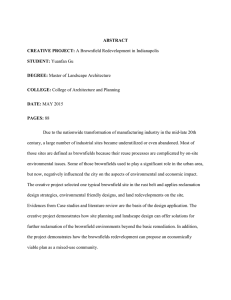
![Car Wash - Teachers [] - Carnegie Mellon University](http://s3.studylib.net/store/data/007759052_2-dc7f9f6e7ee8d5936ad1af830ebd5069-300x300.png)
